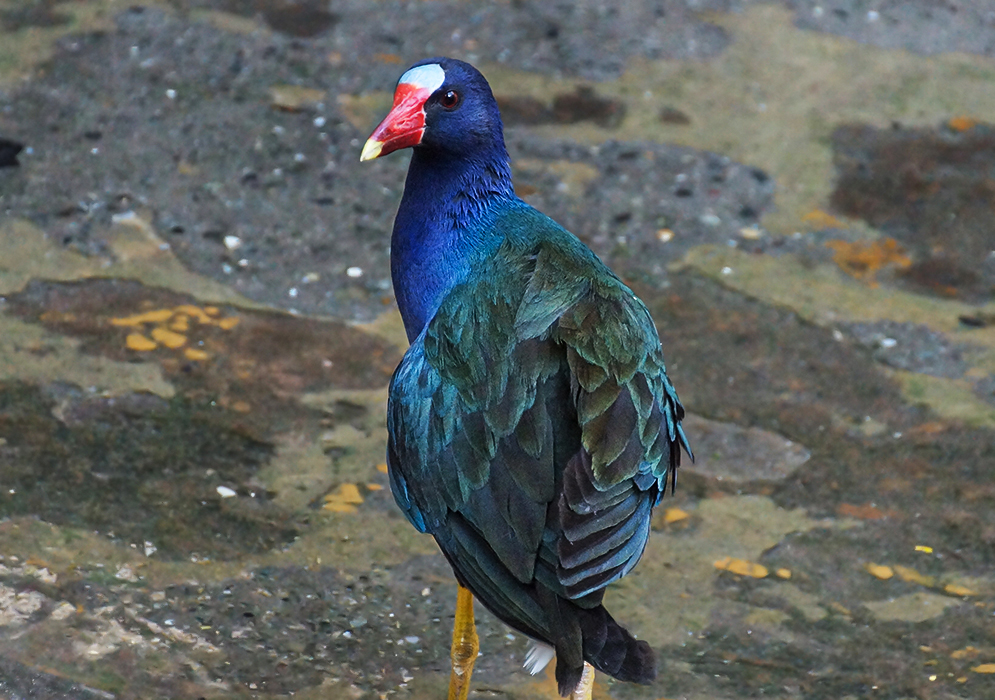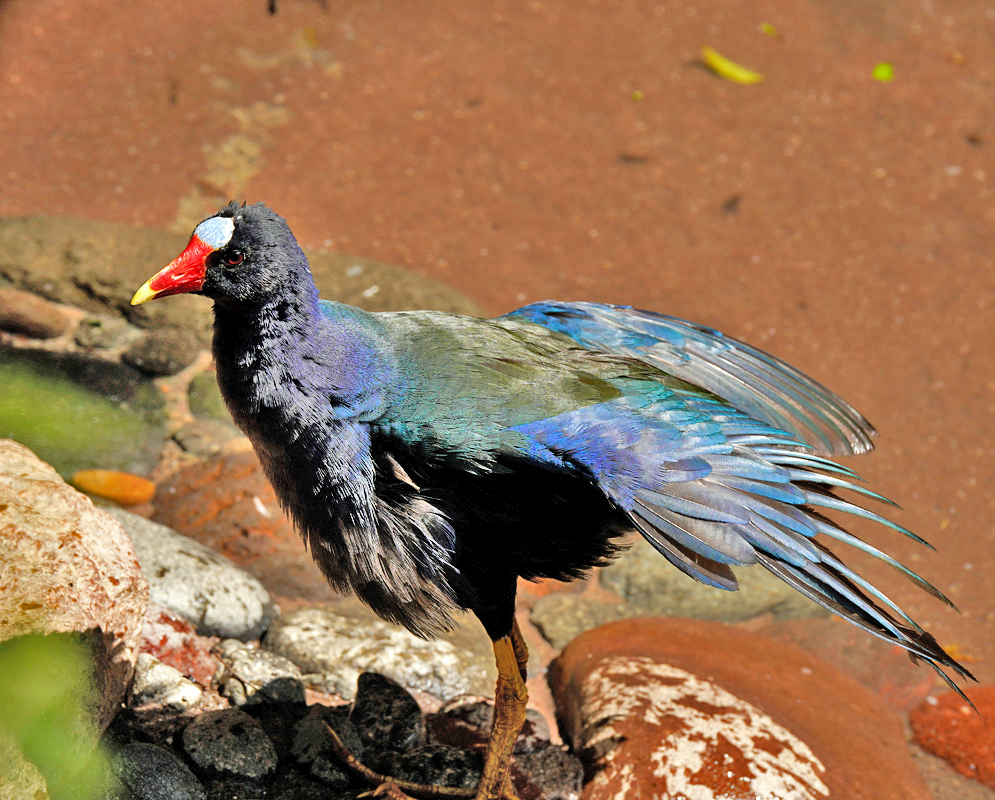This post has 11 Simple Fields-fields attached. Show fields.

The Purple Gallinule, inhabits freshwater marshes, primarily those with year-round water and abundant vegetation such as sedges, grasses, and rushes. They thrive in areas with dense, emergent floating vegetation like American lotus, water shield, spatterdock, pickerel weed, arrowhead, water pennywort, and various water lilies. These plants provide both foraging and nesting habitats. The species also utilizes lakes, ponds, impoundments, reservoirs, and wet rice fields, as long as there is sufficient food and vegetation for cover and foraging. In South America, migrating individuals have been found in Andean wetlands at elevations as high as 13,000 plus feet. The Purple Gallinule is omnivorous, consuming a greater proportion of plants than animals. They feed on various parts of the water-lily family, including flowers and fruits, as well as flowers, leaves, and tubers of invasive exotic plants such as water hyacinth and hydrilla, and also rice. Their diet also includes seeds of sedges and other aquatic plants like buttonbush, water willow, sawgrass, smartweed, and pickerel weed. Animal prey includes spiders, mollusks, beetles, bees, worms, snails, dragonflies, leeches, ants, grasshoppers, and moth larvae, as well as frogs, small fish, and even eggs and nestlings of other birds. They are capable of diving underwater, staying hidden except for their bill. Adults may clash over territories, posing in erect posture, chasing, and sometimes striking each other with feet and bills. The nesting pairs in the United States appear to be seasonally monogamous, defending territories of about 2.5 acres. Nonbreeding birds are usually found in less suitable areas for nesting and are not territorial. Interestingly, Purple Gallinules often nest in the same areas as Common Gallinules, which appear to be dominant over them. The Purple Gallinule is currently listed as "Least Concern" according to the IUCN Red List. The global breeding population is estimated at 400,000. These birds are vulnerable to declines in water quality, changes in water levels, pollution, runoff, and loss of wetland habitat due to draining or conversion to other uses.



